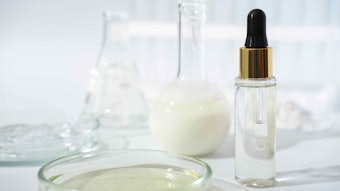The interaction that occurs when combining the raw materials used in the formulation of personal care products is more than the sum of the properties of each of the raw materials. There are a number of interactions that include formation of self-assembling complexes. These complexes can either strengthen or weaken the functional attributes of the formulation. Because most of today's high performance formulations are very complex and contain a plethora of ingredients, it is difficult to predict the effect of changes in those formulations. In an attempt to understand these interactions, a simple system is used. The results of these interactions then can be used to help formulate more effective products.
Surface active agents, commonly called surfactants, can be divided into groups depending upon the charge on the organic portion of the molecule.1 According to such a scheme, surfactants are classifi ed as anionic, cationic, nonionic or amphoteric. These materials are used in a variety of formulations and rarely are used alone. A look at a typical shampoo bottle will show numerous materials that all interact, in many instances producing viscosity-altering nanostructures. It is the nature of these interactions that make formulations work or fail. Consequently, it is helpful to understand the interactions between the groups. More than two decades ago, Ken Klein suggested the possibility of maximizing the effect of the interaction. The present article results from an attempt to understand these interactions.
Surface active agents, commonly called surfactants, can be divided into groups depending upon the charge on the organic portion of the molecule.1 According to such a scheme, surfactants are classifi ed as anionic, cationic, nonionic or amphoteric, with the charges as shown in Figure 1. These materials are used in a variety of formulations and rarely are used alone. A look at a typical shampoo bottle will show numerous materials that all interact, in many instances producing viscosity-altering nanostructures. It is the nature of these interactions that make formulations work or fail. Consequently, it is helpful to understand the interactions between the groups. More than two decades ago, Ken Klein suggested the possibility of maximizing the effect of the interaction. The present article results from an attempt to understand these interactions.
Surface active agents, commonly called surfactants, can be divided into groups depending upon the charge on the organic portion of the molecule.1 According to such a scheme, surfactants are classifi ed as anionic, cationic, nonionic or amphoteric, with the charges as shown in Figure 1. These materials are used in a variety of formulations and rarely are used alone. A look at a typical shampoo bottle will show numerous materials that all interact, in many instances producing viscosity-altering nanostructures. It is the nature of these interactions that make formulations work or fail. Consequently, it is helpful to understand the interactions between the groups. More than two decades ago, Ken Klein suggested the possibility of maximizing the effect of the interaction. The present article results from an attempt to understand these interactions.
For the complete article, select "Purchase This Article."











